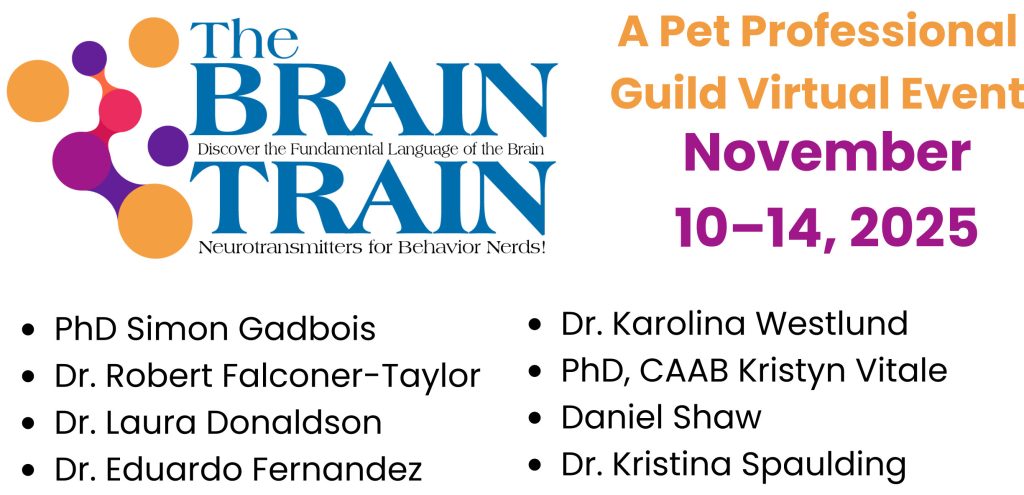Training

Dog Car Safety: Help – An Escapee!
Recently, my nephew and I saw a dog running down a busy main road. She was very lucky as between us we managed to redirect her down an alleyway away from all the traffic and eventually I got her to come near enough to me so that I could take hold of her collar. She was obviously very frightened and stressed. A scared dog may well bite so my approach was very slow, low, friendly and unthreatening in order to gain some trust and not put either of us… Continued
Cognitive Dog Training
I first started teaching about what I called cognitive dog training several years ago. I didn’t invent it; I simply named what a lot of positive, forward-thinking dog trainers were already doing. Cognitive dog training enlists the dog as a partner in learning; it is not about training so much as it is is about teaching. It’s also about redefining human-dog relationships. How does it differ from other approaches to dog training? It encourages dogs to think and solve problems. Often, there is… Continued
The Problem with Punishment
Fortunately today, thanks to force free advocating organizations like Pet Professional Guild, there is much more awareness of the detrimental effects of punishment. Sadly though, in some quarters it still prevails and is even advocated by some and perpetuated by the media. So what actually is the definition of ‘punishment’?, what constitutes it? What are the alternatives? Let’s take a look. What Is Punishment? Speaking scientifically, there are two forms of punishment – positive and negative. Let’s deal with positive punishment first. Positive punishment refers to when something is added into your pet’s world… Continued
Change Is Difficult – We Are Humans After All
As trainers we sometimes talk about owner compliance, or maybe more accurately – in some cases at least – the apparent lack of it. Part of our job as dog trainers is to find ways to motivate our clients to make changes to the lives of their dogs and often this means they also need to change the way they do things too. Change is hard and we humans need good reasons to initiate change, but nevertheless, to change the dog’s behavior, we need to change the owners’ behavior first. I… Continued
Local Enhancement and Socially Facilitated Behaviors in Dogs
This post started out as one thing and transformed into another as I went along, as many of mine do. I have been familiar for a while with the term local enhancement for a type of social learning in dogs. I had some videos that I felt were good examples. But while researching this post and putting the clips together into a movie, I learned that the concepts and definitions were a lot less cut and dried than I thought. This topic is up for lots of interpretation and discussion… Continued
Putting More Tools in the Tool Kit
Recently I worked with an adolescent dog that I trained as a puppy. Like many adolescents he suddenly forgot several of his training skills and got stuck offering two behaviors in specific circumstances. When greeting people he climbed upon them with his fore paws, seeking attention. And to greet another dog (while on leash) he pulled hard and quickly became frustrated he could not reach them, barking and screeching while his owner strained to keep her footing. I have observed that when dogs enter adolescence they often develop annoying behaviors… Continued
Service Dog Teams and Continuing Education
A few weeks ago, I was part of an amazing experience — the first-ever continuing education weekend seminar for guide dog teams that included trainers and puppy raisers, as well as 80 teams. The weekend was organized by the Guiding Eyes for the Blind graduate council. Actually, it was two members of the council and their partners (including me). It was a lot of work to pull it off, and as the teams started arriving, we all had a moment of panic. But the weekend was an enormous success — and it made… Continued
Dog Park Etiquette
If I had $1 for every time an owner told me how irate they were about something that had happened in the park when they were walking their dog – well, you know the rest! So what are the unspoken rules about how us dog owners should conduct ourselves, what’s expected of us, what’s frowned upon, what constitutes unruly canine behaviour and how can we prevent it in the first place? That’s a whole load of questions for one blog but let’s start at the end and work back! What’s… Continued
What Is the Purpose of a Real Dog?
Labeling normal dog behaviors like barking, digging, jumping up, chasing, growling and others as problems is something my colleagues and I have started seeing more often in our classes and consultations. However, typical puppy behaviors can include mouthing, housesoiling, not wanting to be alone, eating everything in sight, running away, rolling in smelly stuff, chasing moving objects, growling, smelling other dogs’ rear ends or biting and mouthing. These are all natural behaviors, but sometimes a new owner may simply not have fully realized what having a puppy entails. Indeed, our expectations may be high as we… Continued
Leave It: Not Just for Dead Men Anymore
The other day I was pondering the trend of talking about teaching “self-control” and “impulse control” in our dogs. I got to thinking about “leave it,” both the term and the behavior. I realized a couple things. First, the term “leave it” doesn’t pass the dead-man test. (I’ll get to that below.) Second, the behavior “leave it” is not just one, but several behaviors. Third, I realized that this combination of problems could present some difficulties when training. What is your dog actually doing when she successfully “leaves it”? You know what that means:… Continued
Choke Collar Pathology
Recently I persuaded a local pet supply store owner to sell me all his choke collars (at cost) and refrain from restocking them, in return for recommendations for safe body harnesses such as Perfect Fit and Balance. He was persuaded by data I presented to him about the pathology of choke collars. “I never knew they hurt dogs, and only carried them because people asked for them.” I never knew either, years ago when I went to a trainer seeking help with my Labrador, Jake. She told me to use… Continued

Do Dogs Use Tools?
More than fifty years ago, Jane Goodall made a discovery that shook some scientists — particularly those that had long lists of all the things that made humans unique and superior to nonhumans. She saw Chimpanzees using tools. Since then, other researchers have found other nonhumans using tools, from dolphins who use sponges to protect their beaks to elephants using tools to scratch itches, reach food, and plug water holes. Even crows use tools. But, as far as I know, no researchers have studied whether dogs use tools. I’d argue… Continued
Food – Just Cupboard Love?
The Power of Motivation As a behaviour consultant meeting with clients who are seeking to alter their dog’s behaviour, I am always asking owners to think about their dog’s motivation – what is it for that individual dog that will assist in initiating positive change and creating a more appropriate response? Motivation is Individual There is an important word in the paragraph above – individual. I mentioned the word ‘motivation’ in the opening sentence. For many dogs, food such as dog treats, chicken, ham, sausage etc. will be a strong motivator, principally… Continued
Expectations, Disappointment And Opportunities
When we get a puppy or a rescue dog, as a first time or an experienced dog owner or as a competitor in a dog sport, we have certain expectations. We hope for the perfect companion or the perfect agility dog. Depending on our level of experience we try to make sure we get it right. We might research first the breeds, then the breeders, look for the best puppy pre-school and best teenage dog classes, join a club or train with our ‘doggie’ friends. However, regardless of how well… Continued
If You’re Loving It, Why Leave?
Is “choice” a code word for negative reinforcement? It can be. Seems like that’s the context where I see it pop up the most. I’ve written a lot about choice. Two of my major points are: Many people are confused about using choice as an antecedent vs. a consequence; and People are rarely referring to choices between positive reinforcers when they write about their animals having a choice. But here’s another thing that gets under my skin. These days it seems like many people who use the language of choice… Continued
A Positive Outlook on Canine Aggression
It usually starts when I receive a call from a distressed client who informs me that their dog is, or has, suddenly turned ‘aggressive.’ They tell me their dog has ‘challenged’ them in some way: baring teeth, snarling, growling or may have even bitten (with various degrees of severity). Then, when I first meet with that client, they are usually in quite a state because they think their whole mutual loving and trusting relationship with their dog has been shattered, their dog has flipped personality. Some even feel scared of their canine… Continued

An Open Letter on Defining, Determining and Maintaining Best Practices within Our Force-Free Organization
Each year I am reminded of the importance of PPG’s Guiding Principles and our ability to manage them on a daily basis. As I read through them yesterday I felt it would be a good reminder for each of us to read this article written by Debra Millikan DipABST, DipDTBC, PAB in 2012 on how we define, determine and maintain these best practices. Enjoy! The question of how one defines determines and maintains best practice is one that troubles individuals, organisations and professions alike. In the fledgling, unregulated industry of animal training,… Continued
Is Calm Really Just Another Behavior?
What is the most difficult thing to teach our dogs? Coming back or a great recall? While I do agree that this is a difficult behavior, I do think teaching calm is much more difficult. Being calm is not the same as a cued ‘sit stay’ or ‘down stay’. Without becoming too airy fairy: Calm is also not just the absence of arousal, heightened state of alert or stress. For dogs, calm means that they are content, happy, and relaxed. They are able to lie on their bed and watch… Continued
Electronic Containment System or Ambush Predator?
Much has been written about electronic shock (training) devices in their various forms. With all models a dog wears a collar fitted with an electronic device with two metal rods touching the neck of the dog, delivering electric shock. Delivery systems fall into three categories: 1) A person must press a button on a handheld remote control to initiate the shock; 2) The collar has a microphone to detect (barking) sound and trigger shock; 3) A buried wire emits a signal detected by the collar, triggering shock. I will address… Continued
How to Stop a Dog From Digging
Why do dogs dig? One of the questions I get a lot from my dog training clients is how to stop a dog from digging. This may be followed up with asking me why dogs dig in the first place. As with any dog behavior question, the answer can be summed up in two words, “it depends.” I know, probably not the answer you had hoped for, but don’t worry, I will discuss the top five reasons why a dog digs and offer you some solutions to get a dog… Continued
Using C-BARQ as an Assessment Tool
I accept behavioral cases within my dog training practice when I have the necessary education and experience to help, and I refer cases beyond my ability to other professionals. Gathering as much information about the dog in question is important to know which is which. One tool I use is Canine Behavioral Assessment & Research Questionnaire (C-BARQ) which is “designed to provide dog owners and professionals with standardized evaluations of canine temperament and behavior.” C-BARQ was developed by Dr. James Serpell, Professor of Animal Welfare at the University of Pennsylvania,… Continued

Thoughts on the Controversy over “A Dog’s Purpose”
A reader recently asked me what I think of the controversy over the movie A Dog’s Purpose, particularly allegations that a dog was abused during filming. I had had tickets to a preview showing that was a fundraiser for a local dog rescue organization. However, the preview was canceled and the rescue organization took a loss once the film clip showing the alleged abuse was released, so I was already following this controversy. Here’s my take on it. First, a caveat: We’ll never know the whole story. There have been good… Continued
Finding the Underlying Cause for Barking
Go to any online dog forum and the question will come up rather sooner than later: My dog barks, what should I do? The advice then often starts with citronella or even shock collars, rattle cans, and other unpleasant devices such as high pitched noises to name a few. I find it rather scary how easily we resort to punishment; at best doing something unpleasant and at worst something painful and scary to the dog. I am making no excuses; this is abuse plain and simple. There is a reason… Continued
Dominance in Canine Behavior: Reality or Myth?
By Don Hanson BFRAP CDBC ACCBC CPDT-KA It was in the September of 2002 that the first version of this article appeared in Paw Prints, the Green Acres Kennel Shop newsletter. I update the article on a regular basis because sadly there are still too many people promulgating the dominance myth. Unfortunately a popular reality TV show has captured people’s attention and is talking about dogs as pack animals and again perpetuating the idea of using “calm-assertive energy” (read: fear and intimidation) to resolve issues with problem dogs. Like most… Continued
« Previous 1 … 14 15 16 17 18 … 28 Next »

